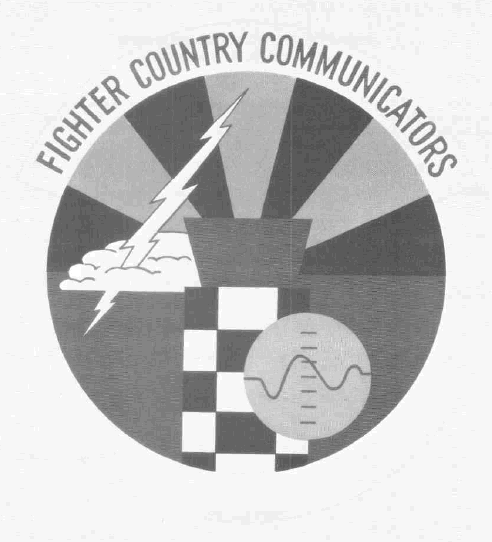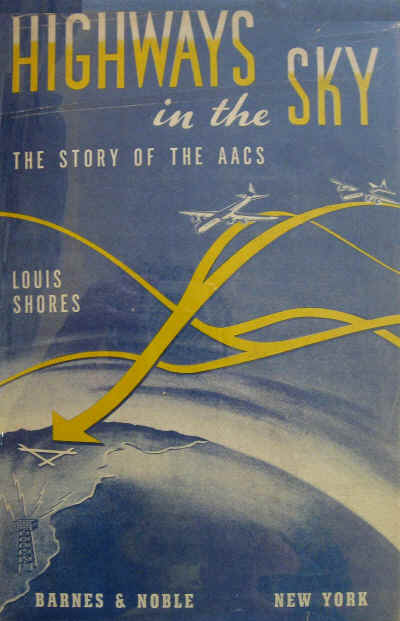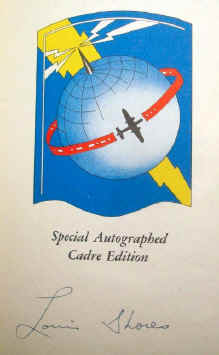Army Airways Communications System (AACS)
Air Communications Service
Airways and Air Communications Service
Military Air Transport Service (MATS)
Air Force Communications Service (AFCS)
Air Force Communications Command (AFCC)
2037th COMMUNICATIONS SQUADRON LUKE AFB, ARIZONA 1 November 1954 The 2O37th AACS Squadron designated and organized at Luke AFB, Arizona, and assigned to the l80lst AACS Group (later, Western AACS Region; Western Communications Region) (MATS GO-172, 15 October 19541. 1 July 1961 Redesignated 2O37th Communications Squadron (AFCS G-2, 1 July 1961). 1 January 1963 Reassigned to the new Tactical communications Region (AFCS G-Bo,27 November 1962). 8 August 1967 Reassigned to the new 12th Tactical communications Region (AFCS G-76, 27 July 19670. 30 June 1971 Reassigned to Tactical Communications Area (later, Tactical Communications Division; Tactical Information Systems Division; Tactical Communications Division (AFCS G-l17, 10 June 1971). 1 July 1984 Redesignated 2037th Information Systems Squadron (AFCC SO G-81, 25 June 1984). 1 November 1986 Redesignated 2037th Communicataons Squadron (AFCC SO G-O4, 21 October l986). AWARDS AFOUA 1 January 1978 - 31 December 1979 AFOUA 1 January 1986 - 31 December 1987 COMMANDERS
2037th COMMMUNICATIONS SQUADRON The predominant colors of the squadron emblem are golden yellow and ultramarine blue, to symbolize the excellence of the assigned personnel, and the sky which is the major theater of operations of the United States Air Force. Red, white, and medium blue are added as the symbol of our national pride. The field is patterned after the Arizona State Flag, providing a two-fold meaning. it symbolizes the geographic heritage of the squadron, and depicts the western sky, the service domain of the unit. In the foreground, a control tower rises with the sun, symbolizing the unit's growth with the Phoenix "Valley of the Sun." The cloudburst represents the history of the squadron's expansion, as its scope broadened to include meteorological support. In addition, it demonstrates the ongoing commitment to all-conditions service. The lightning bolt, symbol of communication, therefore is depicted piercing the cloud. The overlapping of the cloudburst, tower, and test oscilloscope signifies the team spirit, the bringing together of communications electronics meteorological support through maintenance, operations, and air traffic control. This emblem symbolizes the history of pride and professionalism of the 2037th Communications Squadron, and its dedication to the host base, the community, the Air Force Communications Command, and the United States Air Force. This information from - A SALUTE TO AIR FORCE COMMUNICATIONS COMMAND LEADERS AND LINEAGE Office of AFCC History by Linda G. Miller AIR FORCE COMMUNICATIONS COMMAND UNITED STATES AIR FORCE SCOTT AFB, ILLINOIS 1 October 1990 pp 528-529
|
||||||||||||
|
In the SMECC Library we have - -
Highways in the Sky: The Story of the AACS (Signed)
About the author - Louis Shores
From Wikipedia, the free encyclopedia
Louis Shores (September 14, 1904–June 19, 1981)[1] was a noted librarian who worked for the promotion of the library as the center of all learning, in both public and academic institutions. Shores was recognized for his integration of audiovisual materials into library collections. He was named one of the “100 of the most important leaders we had in the 20th century” by American Libraries, and the impact of his vision can be seen today in libraries across the country.[2]
Early lifeLouis Shores was born Louis Steinberg on September 14, 1904 in Buffalo, New York. Shores was the third of five children of Paul and Ernestine (Lutenberg) Steinberg.[3] Both immigrants, Paul was painter specializing in portraits, while Ernestine supported the household as a seamstress.[3] The family moved a couple of times in search of better jobs and education for their family. In 1919 Shores had his first job in a library, as a page at the Toledo Public Library.[3] It was in Toledo, Ohio that Paul died in 1923.[3] EducationWhen he graduated from high school in 1922, Shores attended the University of Toledo.[4] He also moved from his public library job to a position in the university’s library.[4] It was at this time that Shores began developing his opinion that libraries and their resources could provide an overall education superior to that of more traditional instruction given in classrooms.[5] Louis changed his last name from Steinberg to Shores in 1926, as his older brother had done when he left their childhood home in 1920.[4] The change of name goes unmentioned by Shores in his writings and therefore the reasoning behind it remains unknown.[4] The same year Shores changed his name he graduated from the University of Toledo and followed his family to New York City, where he attended the City College of New York in order to earn a Masters Degree in Education.[6] Upon earning his Masters, Shores could not find a teaching position. Turning his attention to a different career he enrolled at the School of Library Service at Columbia University in 1927.[7] With his Masters in Library Service, in 1928 Shores took a position at the Fisk University in Nashville, Tennessee.[7] In 1930 Shores entered University of Chicago’s Graduate Library School in order to earn his doctorate, which he left uncompleted in 1931, to return to his job at Fisk University.[8] During his year in Chicago he met and married Geraldine Urist.[8] He would later earn a PhD in 1933—not in Library Science, but in Education—from the George Peabody College for Teachers, with his dissertation (later to become a published book) “Origins of the American College Library, 1630-1800.”[9] CareerShores left Fisk to start a new library program at Peabody in 1933.[9] His work at Peabody, shaping and developing the library program, was interrupted by World War II. Shores was a supporter of the US's entrance into the war and joined the Army himself in 1943, at the age of 39.[10] His duties to the US Army kept him absent from Peabody until 1946, at which point disagreements about salary and work load caused the end of his association with the college.[11] In 1946 Shores accepted two positions: to be the first Dean of the Library School at Florida State University and an editorial advisor for the encyclopedia company, P.F. Collier & Son.[12] He would maintain these two jobs for the rest of his career. Shores contributed one of the most-used reference books of his time, Basic Reference Books.[13] First released in 1939, the only thing that prevented it from becoming a true milestone in his life and the history of library science was his lackluster updating of the text. The last edition was completed in 1954 with the updated title, Basic Reference Sources.[14] One of the highlights of Shore’s career was the American Library Association accreditation of his Library School at FSU in 1953.[15] In 1967 Shores was forced to retire due to health issues.[16] He continued to take on as much work as he could, as an editor and speaker, when his health allowed.[16] Shores wrote more books in this period of his life than any other: seven post-retirement to his five previously.[17] Upon his retirement, FSU gave Shores the honor of dean emeritus until his death in 1981.[17] The school also honored him by naming a building after him in 1981, the Louis Shores Building, which houses the library school to this day.[14] PhilosophyShores believed that libraries were places of lifelong learning and that that learning should begin early. He extolled the importance of introducing children to books and reading in infancy and encouraging learning through the use of the libraries.[5] The generic bookShores believed in an idea he referred to as the “generic book”—his term for all materials in the library. He first published this concept in a 1958 issue of the Saturday Review and later expanded it into a book called The Generic Book.[18] In it, Shores outlined several different formats: Print (i.e. book or journal), Graphic (globe or photograph), Projection (film or slide), Transmission (radio or tape recording), Resource (person or object), Program (computer or machine) and Extrasensory (telepathy or clairvoyance). Shores talked about how all of these things were integral to learning and that the majority of them should be found in the library.[18] The Materials CenterShores believed that the library should be the center of the educational institution.[5] He believed that the librarian should not just find books, but also be a teacher, and should advise students on materials to further their independent study. Shores thought a person could get more out of his or her personal drive to learn than in any classroom, and that the library was the key to this learning.[19] Shores also came to believe in the importance of media beyond books. He thought the stocking of films, slides, audio recordings and maps essential for a well-rounded library collection. However, Shores did not like the presence of audiovisual departments in school; he felt the library should house all the learning materials and that every librarian should be a media specialist. He even dreamed of a library where movies and books on a given subject would be shelved together.[20] In 1947, Shores put his philosophy to work when setting up the library at FSU. He called the library the “Materials Center” to be more inclusive of all the kinds of resources therein, including 16mm films, filmstrips, discs, tapes, slides and transparencies among others.[21] The Materials Center used color-coding to indicate the format of a resource in the card catalog and had the equipment necessary to use audiovisual materials, including one of the earliest “listening posts” where you could listen to recordings over headphones.[21] It was an influential idea, but took time to take effect; it was not until the mid-1960s that librarians and media-specialist became one and the same at many schools.[21] WorksA selection of some of Shore’s written works.
References
|
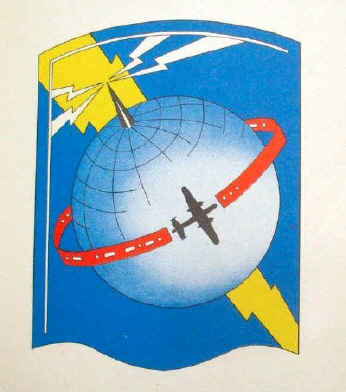
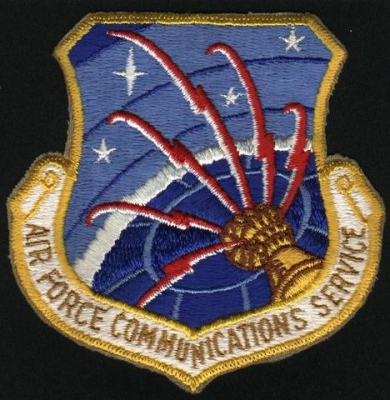
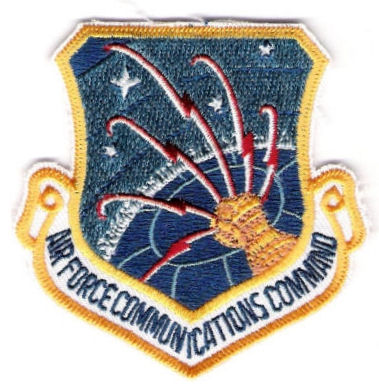

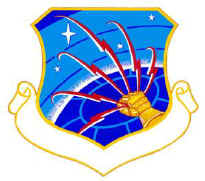 Established
as Army Airways Communications System Wing on
April 13, 1943. Activated, as part of Flight
Control Command, on April 26, 1943. Reassigned
directly to the Army Air Forces on July 14, 1943.
Redesignated Army Airways Communications System on
April 26, 1944. Redesignated Air Communications
Service, and reassigned to Air Transport Command,
on March 13, 1946. Redesignated Airways and Air
Communications Service on September 11, 1946.
Reassigned to Military Air Transport Service
(MATS) on June 1, 1948. Effective July 1, 1961,
relieved from assignment to MATS, elevated to
major command status, and redesignated Air Force
Communications Service. Redesignated Air Force
Communications Command on November 15, 1979.
Status of the Air Force Communications Command
changed from a major command to a field operating
agency of the United States Air Force on July 1,
1991. Redesignated Air Force Command, Control,
Communications and Computer Agency on May 28,
1993. Redesignated Air Force Communications Agency
on June 13, 1996. Status changed from a field
operating agency of the USAF to a subordinate unit
of the Air Force Communications and Information
Center on April 1, 1997 and back to a field
operating agency on October 1, 2000.
Established
as Army Airways Communications System Wing on
April 13, 1943. Activated, as part of Flight
Control Command, on April 26, 1943. Reassigned
directly to the Army Air Forces on July 14, 1943.
Redesignated Army Airways Communications System on
April 26, 1944. Redesignated Air Communications
Service, and reassigned to Air Transport Command,
on March 13, 1946. Redesignated Airways and Air
Communications Service on September 11, 1946.
Reassigned to Military Air Transport Service
(MATS) on June 1, 1948. Effective July 1, 1961,
relieved from assignment to MATS, elevated to
major command status, and redesignated Air Force
Communications Service. Redesignated Air Force
Communications Command on November 15, 1979.
Status of the Air Force Communications Command
changed from a major command to a field operating
agency of the United States Air Force on July 1,
1991. Redesignated Air Force Command, Control,
Communications and Computer Agency on May 28,
1993. Redesignated Air Force Communications Agency
on June 13, 1996. Status changed from a field
operating agency of the USAF to a subordinate unit
of the Air Force Communications and Information
Center on April 1, 1997 and back to a field
operating agency on October 1, 2000.
